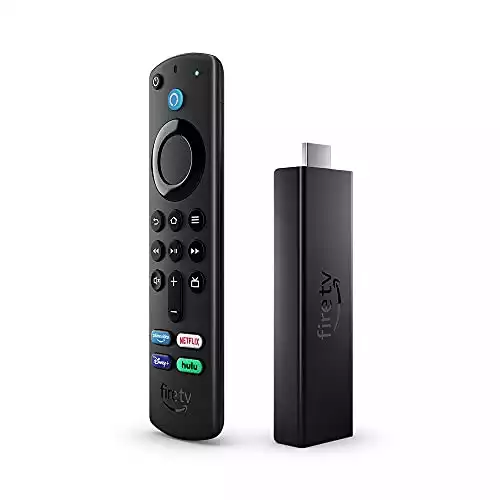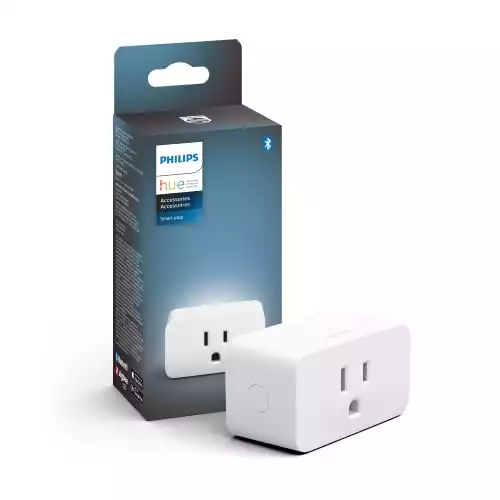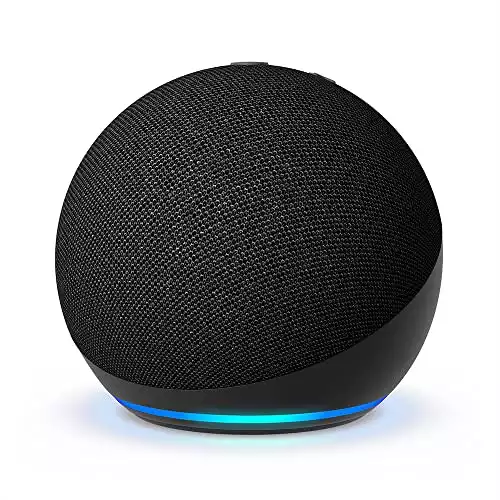This page may contain affiliate links. Please read my disclosure for more info.
Your Roomba is practically a member of your family, so you want to treat it right. More importantly, you want to make sure it treats you, your home, and your possessions right.
This article is full of Roomba tips and tricks to get the most out of your robot vacuum. I’ll include ways to prevent Roomba from damaging your home, how to get the best full-house cleaning out of Roomba, and how to properly maintain your Roomba. Most of these tips work equally well for other robot vacuums, and I’ll let you know which ones are Roomba-specific.
Use Risers and Bumper Extensions
Finding your Roomba caught under a couch is frustrating. Worse, some Roombas just don’t seem to learn which objects are safe to clean under and which ones aren’t.
Fortunately, there are a couple of easy ways to stop Roomba from getting stuck:
- Use furniture risers to left beds, couches, and other low-lying furniture above Roomba’s head.
- Add bumper extensions to stop Roomba from trying to go under furniture you can’t (or don’t want to) raise.
Don’t Let Chairs Get in the Way
Your chairs’ legs form a tiny maze that Roomba can easily get lost in. Since chairs move around more than your other furniture, even advanced Roombas that map out their surroundings won’t get used to dealing with them.
When restaurant owners clean up, they flip the chairs onto the tables. That way, they can sweep up without interference. The same trick works for Roomba. Just get your chairs off the ground when you want Roomba to do a full cleaning run.
Leaning your chairs against a table is also a good solution. Fewer legs on the ground mean less chance of confusing your robot vacuum. It’s not quite as good as getting the chairs entirely off the ground, but it’s a lot easier.
Get Your Cords Out of the Way
Roomba love to play with cords. It’ll pull your phone down by the charging cord the first chance it gets. Proper cord management could save you a lot of money in broken electronics or a lot of time detangling your Roomba.
Some cords can be moved off the ground entirely, which is always the safest option. The next-best option is to encase them in a cord protector (like this one for simple use cases or this heavy-duty option). If you’ve got cats or dogs, those protectors can also save you from dealing with chewed-up cords.
Use Virtual Walls (or Other Containment)
Sometimes, there are areas you just don’t want your Roomba cleaning. That can include areas with hazards, rooms with lots of objects on the ground, or places where your kids or dogs are playing.
Physical barriers like gates and boxes work to block any robot vacuum, but most offer a better option. Roomba makes virtual walls that have two modes—one to block off rooms and another to block off circular regions (like the area around a piece of furniture). Other brands like Shark, Roborock, and Eufy use magnetic boundary markers instead.
Newer Roombas offer an even easier option. Their smart mapping technology lets you block off regions or rooms in the app. This is a more robust solution than virtual walls or physical barriers, and it doesn’t require any additional purchases.
Make a Plan for Every Floor
Running your Roomba in a multi-floor home requires extra planning. In a perfect world, you’d have a Roomba for each floor, but that can get expensive quickly. Fortunately, Roombas are pretty lightweight, so you can just carry it up the stairs when you need to.
Newer Roombas can store up to 10 floor maps, so they have all the info they need to clean your entire home. However, they’ll need access to a base or auto-emptying bin on each floor in case they run out of juice. It’s usually worth it to buy an extra base. Otherwise, you’ll have to carry that up the stairs each time, too.
Run Your Roomba Often
You’re going to want to do everything you can to preserve your Roomba’s battery. One of the easiest ways to do that is to charge and drain the battery regularly. Batteries decay faster if they are left full or empty for long periods of time.
If you run your Roomba every other day (or preferably every day), it will keep the battery running at full strength for much longer. You’ll also end up with a cleaner floor, so this is really a win-win.
Use Idle Mode When You’re on Vacation
Most robot vacuums have an idle mode or standby mode. This mode shuts off all non-essential functions, helps preserve the battery, and stops your Roomba from doing any unnecessary runs while you are away from home. It’s a lot better than coming home to find that your Roomba died trying to pull a broken lamp across the room.
Store Your Roomba Properly
Ide or standby mode is good for a few days, but what if you need to store your Roomba for weeks or months at a time? The proper way to store your Roomba depends on the type of battery it uses.
For robot vacuums with Li-ion batteries, you’ll want to leave the battery in your Roomba even for long-term storage. Just make sure your Roomba is stored in a cool, dry place.
For robot vacuums with NiMH batteries, you need to remove the battery before storing your Roomba. Then, store both the battery and the Roomba in a cool, dry place. Leaving NiMH batteries unused inside your Roomba for long periods of time can degrade the battery’s lifespan.
Run Your Roomba on a Schedule
Every major robot vacuum brand has scheduling options at this point. In most cases, you can even set different scheduled clean times for each day of the week or multiple cleaning times each day.
You want to take advantage of this feature for two major reasons:
- It allows you to run the vacuum during times when it won’t interfere with your use of your main living areas.
- It ensures that you run your vacuum regularly, which is better for the machine and the cleanliness of your home.
Turn on the Lights
Most Roombas use optical sensors. Just like your own optical sensors (you probably call them eyes), your Roomba’s sensors won’t work in complete darkness. Make sure that you leave enough light on for your Roomba to see obstructions and hazards as it makes its way around your home.
You can use some Hue or Wiz smart lights to ensure that your Roomba has the lighting it needs. Just set them to turn on right before Roomba, and you’ll never have to worry about your robot vacuum stumbling around in the dark again. You could even link your Hue lights with Alexa to have them automatically trigger when you tell Alexa to run your vacuum.
Take Advantage of Voice Commands
Most robot vacuums now have voice commands that work from your phone or from your Google Home, SmartThings, or Alexa hubs. Just take a look at the huge list of Alexa voice controls for Roomba, which now has over 80 unique commands!
Some of the most recent voice commands let you coordinate multiple robot vacuums or a robot vacuum and robot mop. You can also make very specific voice requests like spot cleaning behind the couch.
Voice commands are particularly useful when your hands are full, like when you spill something while baking. They are also great for when you need to quickly stop your Roomba because it has gone near a dangerous ledge or caught something that you don’t want it to eat.
Watch the Robot Around Anything New
Roomba is pretty good at learning new terrain, but sometimes it still gets confused. If you have new furniture or any new objects on your floor (like a rug), keep an eye on Roomba during its next run. It could get caught, lost, or just miss a section of the floor that you wanted it to clean.
If your Roomba has problems with the new furniture, consider furniture risers or bumper extensions. You may also need to have your Roomba remap the space from scratch if it doesn’t properly recalibrate for the new addition.
Replace Brushes and Filters Regularly
Roombas last a long time, but some of their parts do have a limited lifespan. Filters, brushes, and batteries will need to be replaced on a regular basis to keep your Roomba running and cleaning at its peak.
Just follow the recommended replacement intervals in the table below, and you’ll be fine. If your robot vacuum came with more specific instructions, of course, you should follow those instead.
| Part | Lifespan (months) |
|---|---|
| Filter | 4 |
| Brush (side) | 9 |
| Brush (extractor) | 12–18 |
| Battery | 20–36 |
Your Roomba’s wheels and cleaning head may eventually wear out, too. There’s no specific timeline for those parts, though, and they may well last as long as the Roomba itself. Don’t worry about replacing them unless they stop working.
Empty the Collection Bin Frequently
The dirtier your floor, the more often you’ll need to clean out Roomba’s dust bin. With really dirty floors, you may need to empty it multiple times per run. If that’s the case, you are best off upgrading to a new newer robot vacuum with an automatic dirt disposal station like the Roomba i3+ or Shark IQ.
For most homes, though, you can get away with cleaning the bin after every run or every other run. And definitely empty the bin before going on vacation or storing your Roomba.
Clean Your Roomba’s Brushes Regularly
Roomba’s extractor rollers and side brushes gather all kinds of hair, fibers, and dirt. Make sure you clean them out at least once per week. That means removing the brushes and roller, thoroughly removing any dirt from them, and even cleaning out the roller end caps.
Keep an Eye on the Wheels and sensors
Other parts of your Roomba don’t need to be cleaned nearly as frequently. When you clean the brushes, check the wheels, sensors, and charging contacts for noticeable dirt. If there’s anything visibly dirty, go ahead and clean it then. Otherwise, you just need to clean those parts once a month or so.
Wipe off That Filter
Roomba filters aren’t washable, but you can usually knock most of the dirt out of them. Just bang them against the inside of a trash can to get most of it out. You can brush the filter off gently to get any remaining dirt or grime. That should be enough to keep your filter working fine for its entire 4-month lifespan.
Keep the Charging Base Dust-Free
When you clean your Roomba, check the metal contacts on the charging base for any buildup of dust. You should be able to clean them off with a dry cloth if you do this regularly. During your monthly cleanings of the sensors, it’s probably good to wipe down the entire charging base.
If you’re noticing that your Roomba takes longer to charge than it used to, go ahead and do a thorough cleaning of the base immediately. Poor contact with the charging station will slow down the charging process and possibly cause long-term harm to your Roomba battery if it isn’t allowed to charge completely.
What’s Next?
If you use it right, your Roomba will make your life easier for years to come. Once you’ve mastered robot vacuum ownership, you might even find that a Robot mop is worth buying. Many of these same tips and tricks will work for those devices, too.
Now that Roomba is handling your cleaning, can I recommend some other ways to let automation simplify your life? I recently compiled a list of my favorite smart plug automations. Robot vacuums may be more visible, but smart plugs can save energy and add convenience to any home. When you combine Roomba, smart plugs, and a low-cost Alexa setup, you’ll be well on your way to living in your dream smart house.
|
N/A
|
$34.99
|
$49.99
|

Zachary has spent 12 hears in the tech industry focusing on automation, analytics, and cybersecurity. His passion is tech education; he uses his industry expertise and STEM PhD to break down complicated concepts into simple step-by-step guides. When he’s not writing or coding, you can find him binging anything Star Trek or Marvel or reading far too many sci-fi novels.




This vacuum has changed our life! We are seniors, I’m 72, my husband is 73. Because of health problems I was no longer able to vacuum, so that chore fell to my husband of 54 years. While he tried his best, he couldn’t begin to clean as efficiently as our “Hazel”. She’s cleaned under beds and other areas that haven’t been cleaned in years! She has absolutely changed our life for the better. Not only does she clean, she also keeps us entertained. Best “employee “ we’ve ever had. Many thanks to who ever invented this wonderful machine! It was worth every penny!